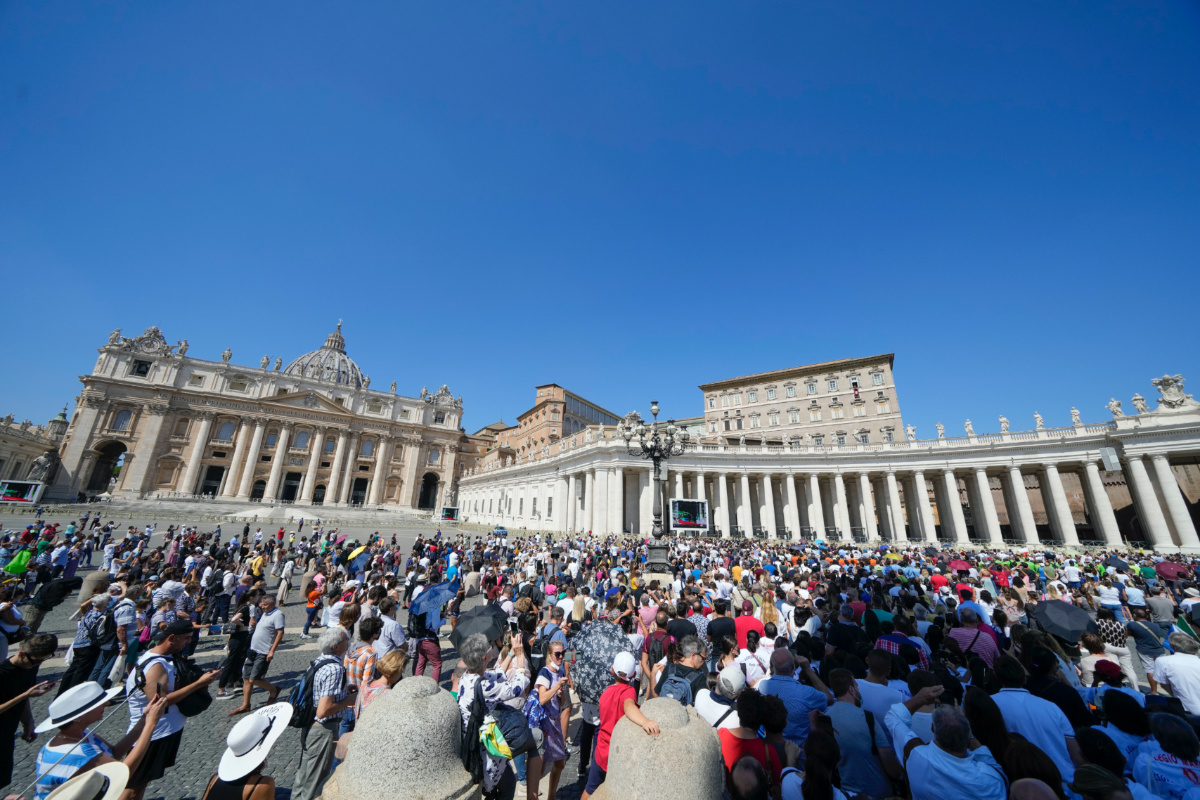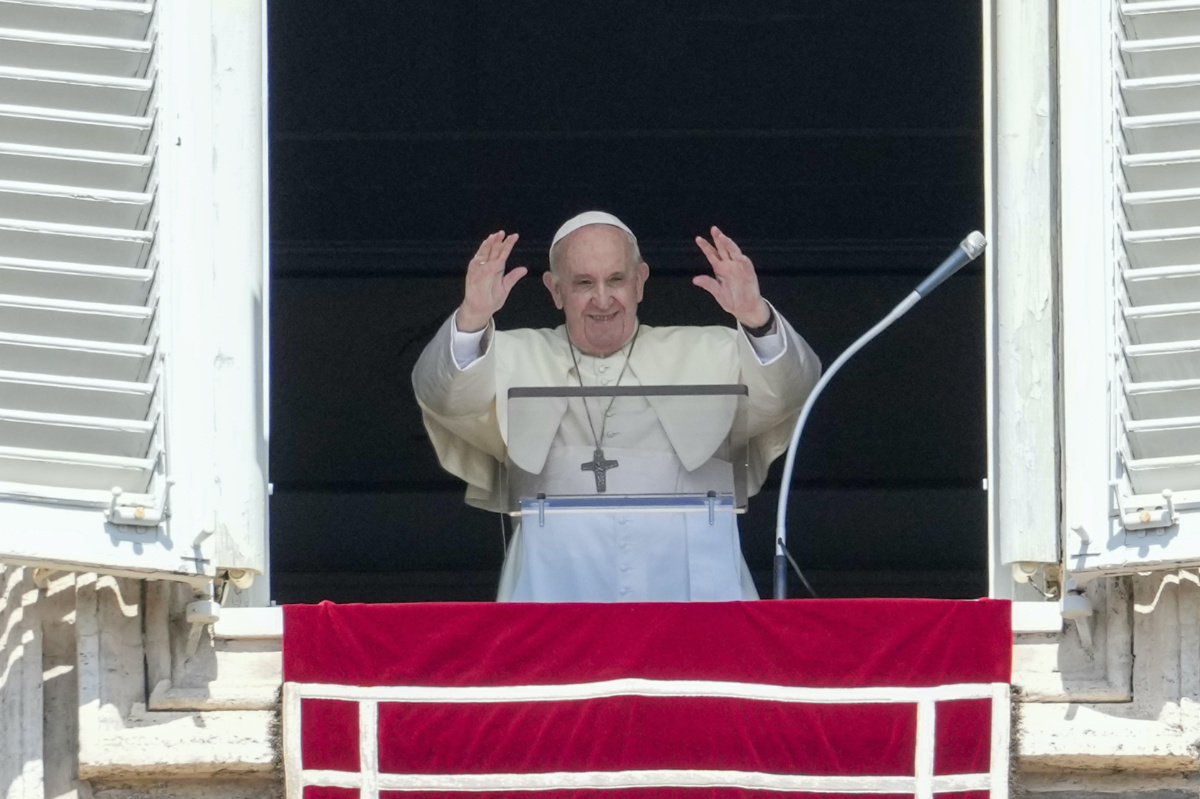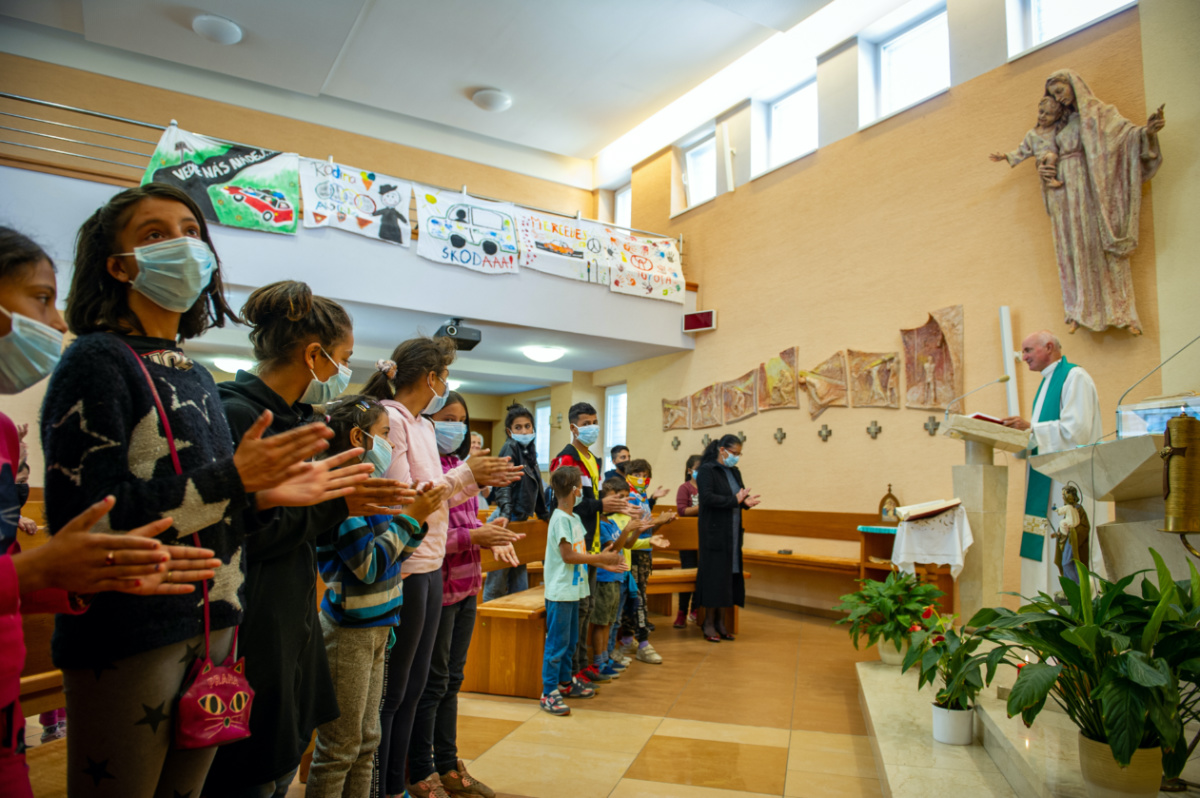
CLAIRE GIANGRAVÉ looks at the itinerary for the Pope’s trip to Hungary and Slovakia…
Vatican City
RNS
Pope Francis will embark on a jam-packed trip to the central European countries of Hungary and Slovakia over 12th to 15th September. Despite his recent recovery from surgery, the Pope will likely tackle hot-button issues, from immigration to Communion and ecumenism.
This will be a “spiritual” visit, said Vatican spokesperson Matteo Bruni in a briefing to Vatican reporters on Thursday. “The focus will be first and foremost the adoration of the Eucharist and the pilgrimage to the Madonna who watched over the suffering of these persecuted communities.”

People crowd St Peter’s Square, at the Vatican, as Pope Francis recites the Angelus noon prayer from the window of his studio, on Sunday, 5th September. PICTURE: AP Photo/Andrew Medichini/File photo.
Hungary and Slovakia both suffered under the Soviet Union’s communist regime and still face economic and social challenges today, worsened by the COVID-19 pandemic.
While the Vatican and local religious authorities wish to keep politics out of the papal visit, Pope Francis’ visit to the heart of Europe makes it “difficult not to talk about the circumstances that involve all of Europe,” Bruni said.
This is Pope Francis’ 34 international trip, bringing the tally of countries visited by the pontiff up to 54. His predecessor, Saint Pope John Paul II, visited Hungary twice, in 1991 and 1996, and came to Slovakia three times, in 1990, 1995 and 2003.
This is Pope Francis’ 34 international trip, bringing the tally of countries visited by the pontiff up to 54. His predecessor, Saint Pope John Paul II, visited Hungary twice, in 1991 and 1996, and came to Slovakia three times, in 1990, 1995 and 2003.
Francis’ first stop will be to the Hungarian capital of Budapest, where he will attend and say the closing Mass for the 52nd International Eucharistic Congress. The congress is a meeting of lay and religious Catholics who gather to reflect, discuss and pray over Christ’s presence in the Eucharist.
Over 100,000 people are expected to attend the papal Mass closing the event, said Fr Kornél Fábry, the general secretary of the congress, speaking to journalists.
“This will be the height of the week,” he said. “We are honoured to welcome the Holy Father because since 2000, popes haven’t come for the International Eucharistic Congresses.”
The congress includes events and workshops aimed at deepening the faithfuls’ understanding of the Eucharist as well as eucharistic adorations, where people may pray and meditate over the sacrament of Communion. While the workshops touch on a vast array of topics including its intersection with ecumenism and the care for creation, some current disputes over Communion are conspicuously absent from the agenda.
In the United States, debates on whether abortion-rights Catholic politicians, such as President Joe Biden, should be banned from receiving the Eucharist have split bishops and faithful. While the topic of Communion bans will not be addressed at the congress, the issue will likely loom over the papal visit.

Pope Francis greets the crowd prior to reciting the Angelus noon prayer from the window of his studio overlooking St Peter’s Square, at the Vatican, on Sunday, 5th September. PICTURE: AP Photo/Andrew Medichini.
Another underlying question surrounding the apostolic visit is the brevity of the papal stay, only nine hours, which some Vatican observers have speculated reflects tensions between Pope Francis and Hungarian Prime Minister Victor Orban, particularly on issues related to immigration.
“Many have asked, why does the Pope only come for a few hours? Why doesn’t he stay longer?” Fábry said. “We had to explain that if I am invited to a dinner, I can’t sleepover!”
The President of the republic invited the Pope to the congress and not for a visit to the country, the priest explained. “Of course, at the beginning, many were angered, but I think that people understand now,” he said, adding that he hopes the pope might come for a longer stay in the future.
Orban is a powerful conservative force in Europe, emphasizing traditional family values and the defense of Europe’s Christian identity. “What [Orban] says, and the majority of Hungarians agree, is that we mustn’t bring trouble to Europe but help where trouble is,” Fábry said, pointing to the sizable output of financial and humanitarian aid the Hungarian government issued to countries in the Middle East and Africa.
While Pope Francis has also advocated for Western countries to send aid to help individuals in their own countries, his advocacy for welcoming and integrating immigrants and refugees clashes with Orban’s vision of an ethnocentric nation state.
Francis, 84, is also recovering from a surgery that removed part of his colon in July and kept him in the hospital for 11 days. Given the Pope’s age and health concerns, Fábry said the main objective of the congress organizers is to make his stay, albeit short, as easy and enjoyable as possible.
Francis will land in Budapest at 8am local time, where he will have a brief meeting with Orban, Hungarian President Janos Arder and representatives of the local church. He will give a speech to the Ecumenical Council of Churches and the Jewish community in the country.
“This International Eucharistic Congress will also be an encounter between the East and the West. Since we are in the center of Europe, this is the optimal place for the Holy Father to meet with the Orthodox and Catholics,” Fábry said.
The Ecumenical Patriarch of Constantinople of the Eastern Orthodox Church, Bartholomew I, will likely be present at the papal Mass. Orban, who is married to a Catholic, may also be in attendance.
At 2:40pm local time, Pope Francis will leave Bratislava to visit Slovakia, where he will have a brief meeting with local authorities followed by an ecumenical meeting and then a gathering with the local Jesuit community.

Residents attend a mass inside a church located in the Roma settlement at the Lunik IX quarter of Slovakia’s second largest city of Kosice, on Sunday, 5th September. Pope Francis will make his visit to the impoverished Roma community in Slovakia one of the highlights of his pilgrimage to “the heart of Europe.” Francis will be the first pontiff to meet the most socially excluded minority group in that Central European country. PICTURE: AP Photo/Peter Lazar.
On Monday, the Pope will hold several meetings with political representatives in Slovakia, including a private encounter with President Zuzana Čaputová. Francis will meet with members of the local Jewish community and hear the testimony of a man who lived under the Nazi regime in the country.
Pope Francis recently drew criticism from Jewish scholars for his comments pointing to the Torah being “obsolete” during his public audience on 11th August. The papal visit to Hungary and Slovakia might be an opportunity for the Pope, who has a keen interest in promoting Jewish-Catholic relations, to remedy the incident.
Francis’ first afternoon in Slovakia will be focused on the poor and the marginalised, two main themes of his pontificate. He is expected to meet with the missionaries of charity at the Bethlehem Center, which caters to the poor and especially to the sick living in society’s peripheries. Homeless people who live in the Bethlehem Center will have an opportunity to meet the Pope and receive his blessing.
The second day in Slovakia will start in Košice, the second-largest city in the country. After a short stop at the seminary, Pope Francis will visit Lunik IX, the most highly populated neighbourhood for Roma people. This will be a chance for the pope to listen to the experiences of this often persecuted group. At the large soccer stadium of Lokomotiva in Košice, Francis will speak to the young people in the country.
The pope’s last day in Slovakia will be spent at the National Sanctuary of Sastin, a holy pilgrimage site for many Catholics. He will pray with the local bishops and say Mass in Latin before a large crowd, just as his predecessor John Paul II did before him.
After the Mass, Pope Francis will return to Rome aboard the papal flight where he will give his usual press conference to Vatican reporters and land in Rome at 3:30pm.





